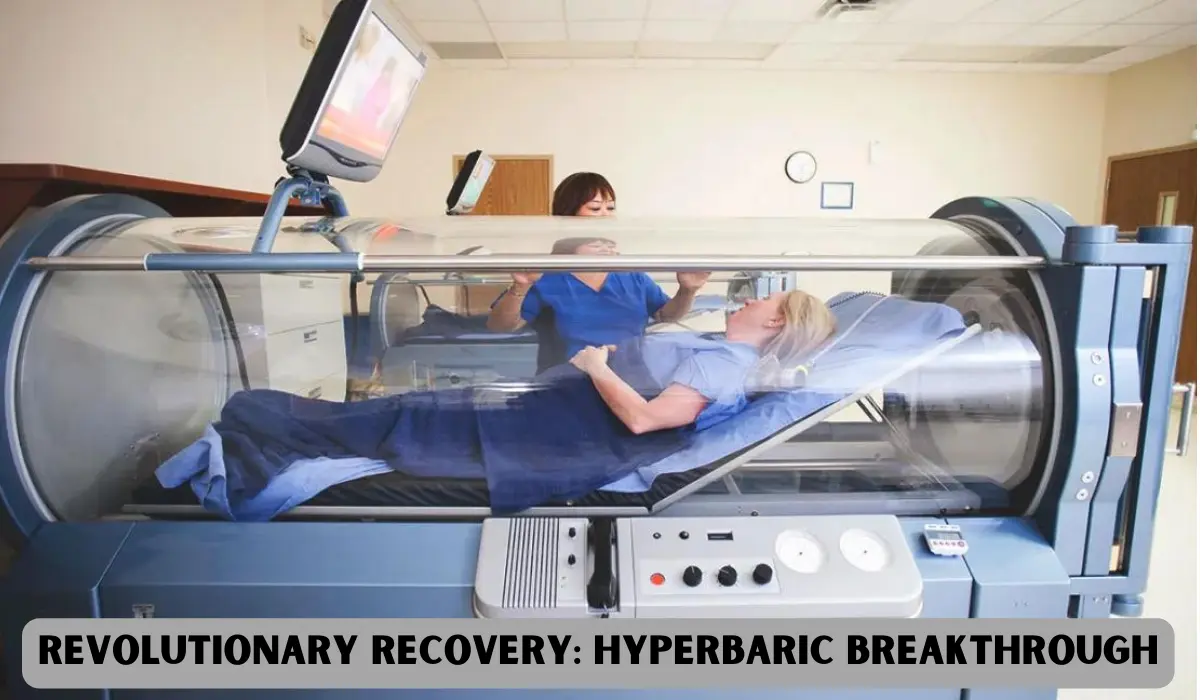In the wake of the unprecedented COVID-19 pandemic, the quest for effective treatments to alleviate the lingering effects of the virus has become paramount. Among the arsenal of therapeutic modalities, hyperbaric oxygen therapy stands out as a beacon of hope, offering potential benefits for patients grappling with post-COVID conditions. However, while the groundwork for hyperbaric oxygen therapy was laid decades ago, the path to its optimal utilization in post-COVID recovery remains uncertain.
Table of Contents
ToggleExploring Hyperbaric Oxygen Therapy for Post-COVID Recovery
In medical science, hyperbaric oxygen therapy stands as a century-old beacon of hope, offering profound benefits in various health conditions. However, a crucial aspect remains uncertain amidst its extensive history – the optimal dosage tailored to individual patients.
Unraveling the Mystery of Dosage
Dr. Anders Kjellberg, a distinguished researcher and Deputy Chief Physician at Karolinska University Hospital, embarked on a quest to decipher the dosage conundrum in hyperbaric oxygen therapy. His ambition was to chart a course that would personalize treatment, optimizing outcomes for each patient.
A Disruption: Enter COVID-19
The emergence of the COVID-19 pandemic disrupted Dr. Kjellberg’s trajectory, steering his research into uncharted waters. Faced with patients battling oxygen deficiency and uncontrolled inflammation, he seized the opportunity to explore the potential of hyperbaric oxygen therapy in the context of post-COVID conditions.
A Glimpse into the Study
Conducting trials across three hospitals, Dr. Kjellberg administered hyperbaric oxygen therapy to 17 COVID-19 patients, juxtaposed with a control group of equal size. The results were astounding, particularly among the 20 patients treated at Karolinska University Hospital.
The Power of Treatment: A Paradigm Shift
A stark contrast emerged among the cohort receiving hyperbaric oxygen therapy. Patients exhibited expedited recovery, evidenced by early discharge and notable improvements in vital parameters such as pulse, respiratory rate, and oxygenation. These findings underscored the treatment’s potential as a catalyst for enhanced recovery.
Deciphering the Mechanism: Immune Rejuvenation
Delving into the hypothesis underpinning these transformative outcomes, Dr. Kjellberg postulates a mechanism rooted in immune rejuvenation. The treatment’s stressor effect prompts the demise of aged and dysfunctional immune cells, paving the way for a revitalized, resistant populace primed for improved functionality.
Looking Ahead: Pioneering Personalized Medicine
Dr Kjellberg’s research illuminates a path forward as the medical community grapples with the repercussions of the COVID-19 era. By unravelling the intricacies of dosage and efficacy in hyperbaric oxygen therapy, a new frontier in personalized medicine beckons—a realm where treatment is tailored to each patient’s unique needs, fostering unparalleled healing and recovery.
Conclusion
In the wake of unprecedented challenges, innovation emerges as a beacon of hope. Dr. Anders Kjellberg’s pioneering research unveils the transformative potential of hyperbaric oxygen therapy in post-COVID recovery. As we navigate the complexities of modern medicine, his work serves as a testament to the power of perseverance, curiosity, and the relentless pursuit of healing.
Critical Tips for Understanding and Applying Hyperbaric Oxygen Therapy in Post-COVID Recovery
Navigating the complexities of hyperbaric oxygen therapy (HBOT) for post-COVID conditions requires a nuanced understanding of its mechanisms and applications. Here are some essential tips to consider:
1. Understand the Basics: Familiarize yourself with the fundamentals of hyperbaric oxygen therapy, including its administration, physiological effects, and potential benefits. This foundational knowledge will be a cornerstone for informed decision-making and patient care.
2. Stay Updated: Keep abreast of the latest research and clinical guidelines surrounding HBOT and post-COVID recovery. As the field evolves, staying informed about emerging evidence and best practices is essential for optimizing patient outcomes.
3. Individualize Treatment: Recognize that not all patients will respond to HBOT similarly. Tailor treatment plans to each patient’s unique needs and characteristics, taking into account factors such as disease severity, comorbidities, and treatment goals.
4. Monitor Patient Response: Regularly assess patient response to HBOT, monitoring clinical parameters such as oxygenation, respiratory rate, and overall symptomatology. Adjust treatment protocols as needed based on objective measures of efficacy and safety.
5. Collaborate Across Disciplines: Foster interdisciplinary collaboration between healthcare providers caring for post-COVID patients. You can leverage complementary expertise and perspectives to optimize patient care and outcomes by working together.
6. Educate Patients: Empower patients with knowledge about HBOT and its potential role in their recovery journey. Explain the treatment process, potential benefits, and associated risks or considerations to facilitate informed decision-making and active participation in their care.
7. Embrace Innovation: Explore novel approaches and technologies that have the potential to enhance the effectiveness and accessibility of HBOT for post-COVID recovery. Embracing innovation and staying open to new possibilities can drive progress and innovation in patient care.
By applying these essential tips, healthcare providers can navigate the intricacies of hyperbaric oxygen therapy with confidence and compassion, paving the way for improved outcomes in the challenging landscape of post-COVID recovery.






